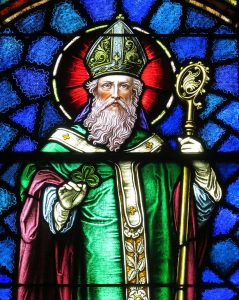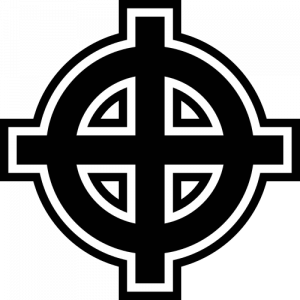The Origins of St. Patrick’s Day
Saint Patrick’s Day, also known as The Feast of Saint Patrick (in Irish: Lá Fhéile Pádraig) is a cultural and religious celebration held in predominantly English-derived countries (Ireland, Canada, The United States and New Zealand) on March 17th.
Who was St. Patrick?
 Known as the patron saint of Ireland, Saint Patrick is one of the most widely-known Christian figures in the world. Despite his prevalence in modern culture, most of what we know about him is either false or at least highly exaggerated – including the fact that he drove the snakes out of Ireland.
Known as the patron saint of Ireland, Saint Patrick is one of the most widely-known Christian figures in the world. Despite his prevalence in modern culture, most of what we know about him is either false or at least highly exaggerated – including the fact that he drove the snakes out of Ireland.
So who was the real St. Patrick?
Born in Roman Britain to wealthy parents, Patrick’s first steps on the path of religion came from his family: his father was a Christian deacon and his grandfather a Catholic priest. When he was 16, he was captured by pirates and taken to captivity in Ireland, where he remained for six years, working as a swineherd.
The time he spent in captivity was critical to his spiritual development. In his Declaration, he explains that the Lord had mercy on his youth and ignorance, and afforded him the opportunity to be forgiven of his sins and converted to Christianity.
After six years of captivity he heard a voice telling him that he would soon go home, and then that his ship was ready. Fleeing his master, he travelled to a port, two hundred miles away, where he found a ship and, with difficulty, persuaded the captain to take him.
Following three days of sailing, they landed, presumably in Britain, and apparently all left the ship, walking for 28 days in a “wilderness,” becoming faint from hunger. Patrick prayed for sustenance and they soon encountered a herd of wild boar; since this was shortly after Patrick had urged them to put their faith in God, his prestige in the group was greatly increased. After various adventures, he returned home to his family, now in his early twenties. After returning home to Britain, Saint Patrick continued to study Christianity.
Following his studies in Christianity – which lasted more than 15 years – Patrick was ordinated as a priest and sent back to Ireland, this time with a mission: minister to the Christians living in Ireland and begin to convert the population of Ireland away from their pagan beliefs and to Christianity.

Drawing on his familiarity with the Irish language and culture due to his years in captivity, Patrick incorporated the traditional rituals of the Irish people into his lessons on Christianity. Since the Irish were used to honoring their gods with fire, he used bonfires as part of the Easter celebrations to help better foster a connection with the Irish people. He also superimposed the sun, a powerful symbol in Irish folklore, onto the Christian cross, creating the Celtic cross that many of us are familiar with today.
Why do we celebrate?
The first Saint Patrick’s Day celebrations were religious holidays – it’s not also known as “The Feast of St. Patrick” for nothing. What started as a religious celebration, however, slowly morphed into a secular celebration of all things Irish – even moreso as the Irish spread outward to other countries. The first Saint Patrick’s Day festival in the US occurred in 1762 in New York, and St. Patrick’s Day festivities have been a huge fixture in the United States ever since, especially in cities like Chicago, Illinois and Savannah, Gerogia.



